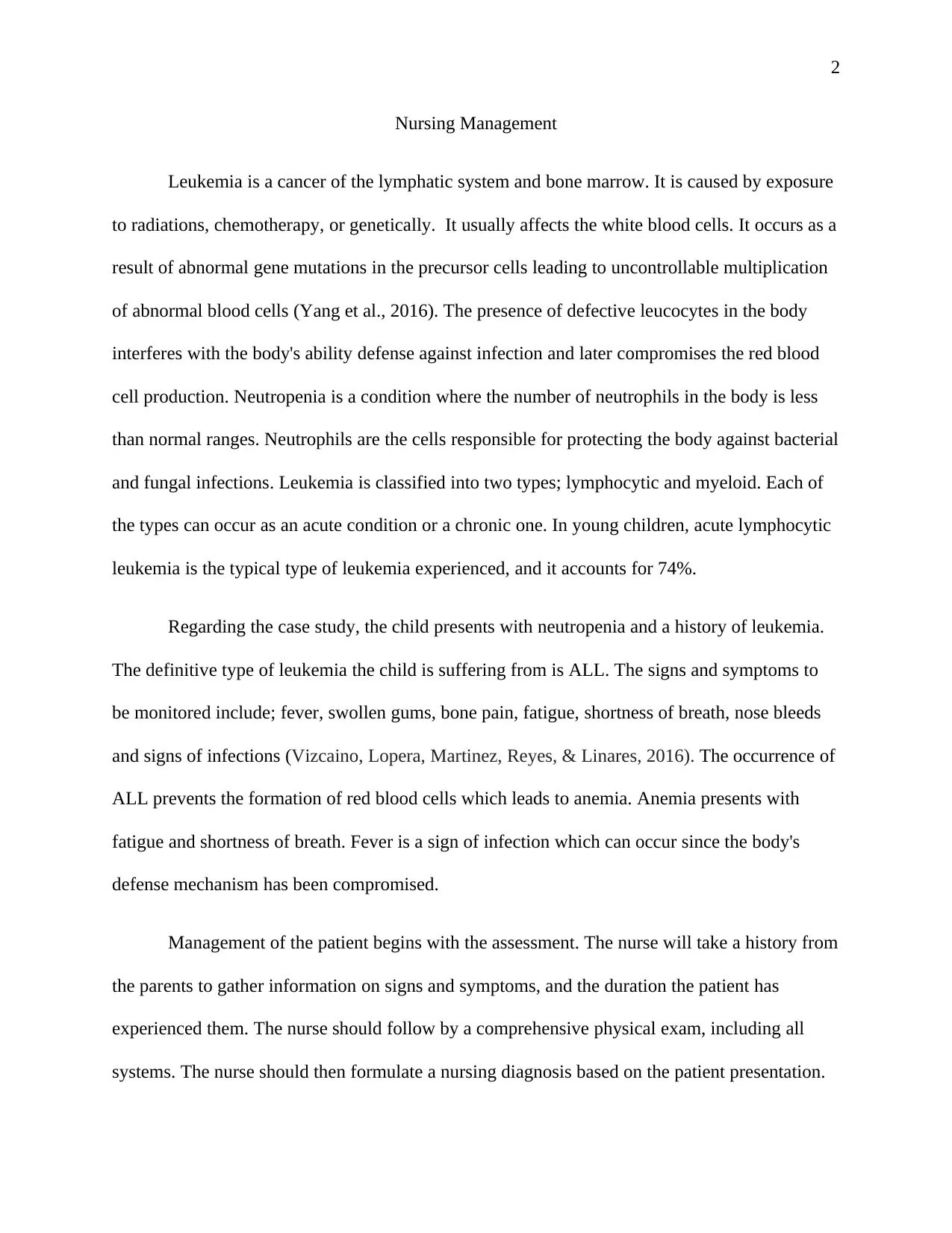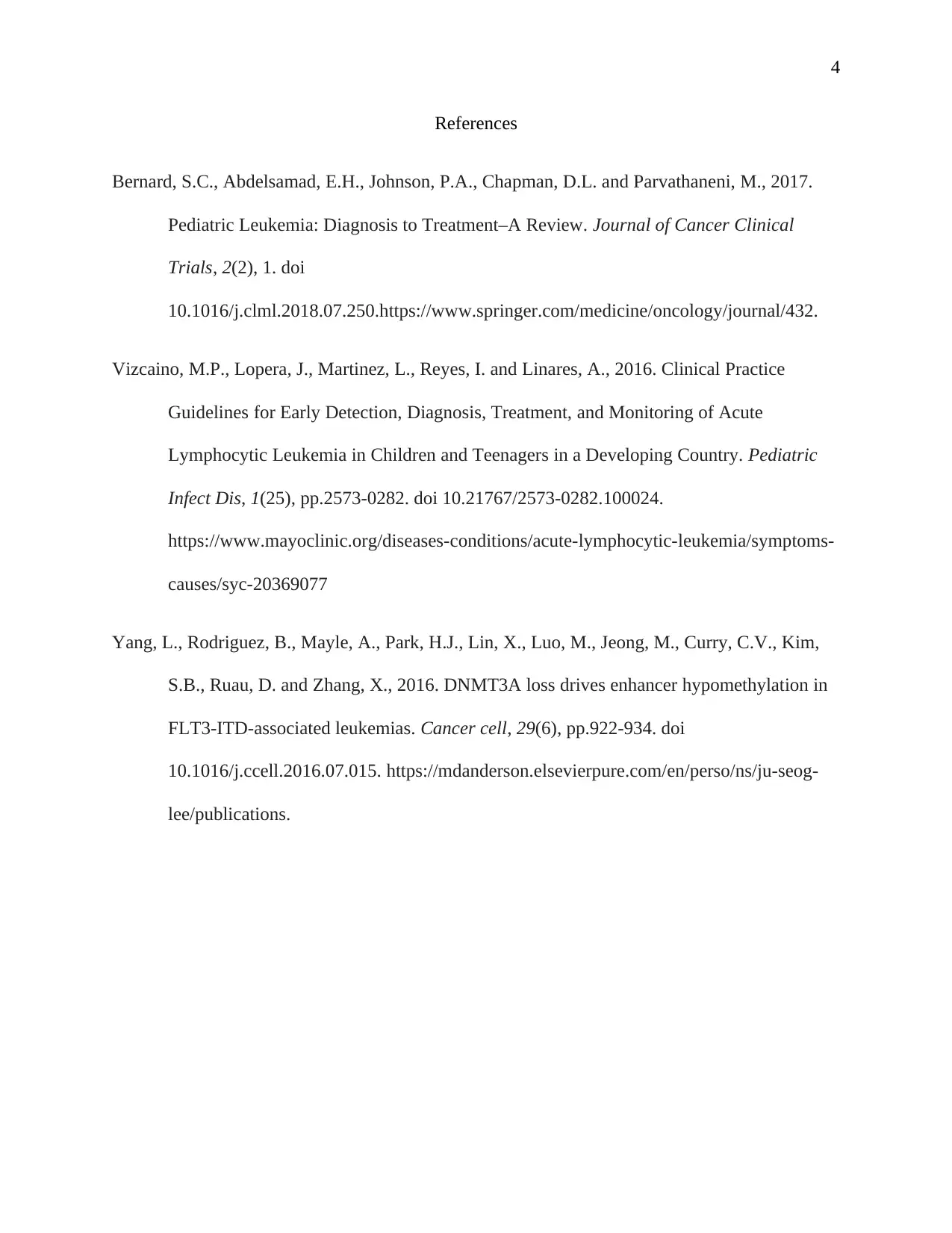Nursing Management: Leukemia, Neutropenia, and Pediatric Care
VerifiedAdded on 2022/11/04
|4
|828
|443
Report
AI Summary
This report focuses on the nursing management of a 7-year-old child admitted with a history of leukemia and current neutropenia. The report begins by defining leukemia and neutropenia, emphasizing that leukemia is a cancer of the lymphatic system and bone marrow, often affecting white blood cells, while neutropenia is a condition characterized by abnormally low neutrophil counts. The signs and symptoms to be monitored include fever, swollen gums, bone pain, fatigue, shortness of breath, and signs of infection. The nursing care plan includes a comprehensive assessment, formulating nursing diagnoses (acute pain, risk of infection, and imbalanced nutrition), establishing goals (pain relief, balanced nutrition, infection prevention, and age-appropriate activity tolerance), implementing interventions (reverse barrier nursing, education on infection signs, administration of antibiotics, analgesics, and antipyretics, and nutritional support), and evaluating the patient's condition. The report highlights the importance of close monitoring, comprehensive care, and family education in managing pediatric leukemia and neutropenia. The report emphasizes the importance of a nurse assessing the patient by taking history and physical exam, drawing a plan of care, implementing the care, and evaluating the patient condition.
1 out of 4











![[object Object]](/_next/static/media/star-bottom.7253800d.svg)